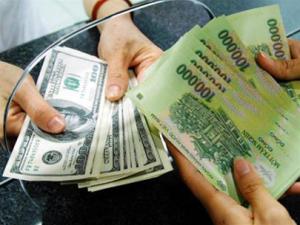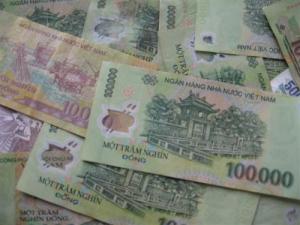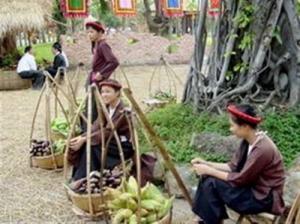Mixed Forecasts on Vietnam’s Inflation Trends

Due to unfavorable weather conditions and the non-reconciliation of production and consumption, aggravated by world prices, price tags for raw food and vegetables in Vietnam have soared in the previous month. Apart from the increase in the country’s CPI (Consumer Price Index), the country’s inflation is seen to rise sharply in the coming terms.
In Ha Noi alone, inflation rose by 9.44 per cent during the first half of 2010, compared to figures from the same period of last year. The inflation rate averages a monthly rise of 0.84 per cent while the total sales of retail goods and services in the city are predicted to go up by 22 percent. National statistics showed a slowdown in inflation for three consecutive months including June, giving the government a temporary relief. Though food prices show a decreasing trend, owed perhaps to the relatively stabilizing foreign- exchange, it is too soon to say that inflation is under control.
Vietnam’s currency is seen to be gaining against the dollar and is now trading at 18,980 per dollar, compared to its exchange rate of 18,990 at the end of May. With that, mixed forecasts were generated on Vietnam’s inflation this year. While Citigroup and Credit Agricole estimate inflation at 11 and 10 percent, World Bank sees the country’s inflation slightly lower at 9 percent. The Ha Noi Department of Industry and Trade have projected that the consumer price index (CPI) in the capital city this year will rise by 7-8 per cent.
From the National Statistics, 9 out of 11 price groups showed a relative increase. Catering services, beverages and cigarettes are among the commodities that demonstrated a remarkable rise at 0.51 percent and 0.72 percent respectively. Transportation, housing, electricity, water, fuel and construction materials did not show an upward direction. The one particular price that is very decisive for the country’s consumer price index is that of the rice. Crude oil, on the other hand, is not providing inflation pressure on the national level right now.
Last month, Vietnam’s government raised its inflation target for 2010 to 8 percent on concerns economic growth will push up prices. The nation is aiming for a gross domestic product growth rate of 6.5 percent this year, higher than the 5.3 percent expansion in 2009. To keep a lid on inflation and ensure a stable supply of essential goods, especially rice, ${bigcity_Hanoi:"Hanoi"} has made loans available to several major enterprises amounting to VND350 billion (US$18.4 million) to allow them to stockpile products for the season of heavier demand at the end of the year.
The June inflation slowdown also gave the Vietnamese government some room to prod banks on reducing borrowing costs. Despite the tamed inflation, experts agree that Vietnam should be watchful for signs of the country’s main sources of inflation - - - the domestic inflation and the commodity prices. Acknowledging the current benign inflation environment, concerned sectors must remain vigilant for the potential uptick in inflation in the second half of 2010.









